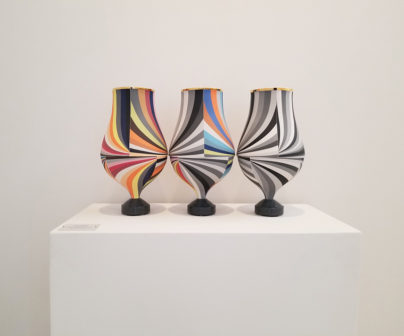
The Rule of Three
February 5 - September 5, 2021 AdmissionThis exhibition re-envisions a selection of sculptural ceramics from the Daum’s permanent collection through an analysis guided by “the rule of three.” The rule of three is a principle, often connected to writing or public speaking, which holds that multiples of three take advantage of the way the human brain processes information through pattern recognition—three of something being the smallest number that allows us to suss out a pattern in a set.
The rule of three has been pervasive throughout history—even the Romans honored the dictum omne trium perfectum (“everything that comes in threes is perfect”). It is found, by extension, in physics (Newton’s three rules of motion), in music (harmonious triads), and in religion (the concept of the triple deity). In writing, there are three-part jokes, three-act plays, and the plots of many literary works (Three Little Pigs, Three Musketeers, Three Billy Goats Gruff).
The exhibition highlights three types of trebling: the first, where three things work together as a triptych to convey a single concept; a second, where the group of three is composed of elements that parallel each other in type or form (i.e., three works from the same series); and a third group comprises artists who are represented by three works that either were made over time or express varied paths, but that come together to convey a nuanced portrait of the artist. Among the triptychs (counted as single works) are those by Joyce Jablonski, Steven Young Lee, Peter Pincus, Don Reitz, Bobby Silverman, and Betty Woodman. The second group includes Wouter Dam, Cary Esser, Suzanne Fagermo, Jun Kaneko, Ole Lislerud, and Arny Nadler. The third group includes Paul Allen, Darcy Badiali, Fang-Yi Chu, Ken Ferguson, Misty Gamble, Jim Leedy, and Jeffrey Mongrain.
